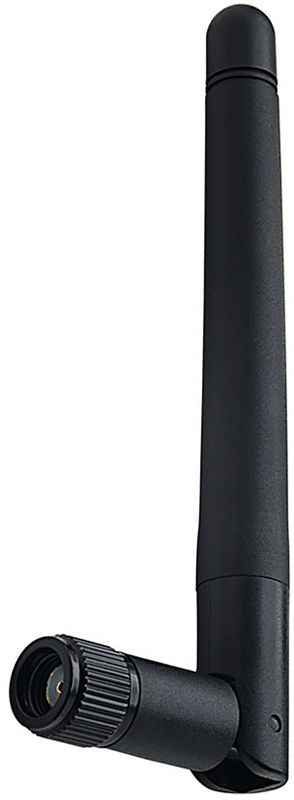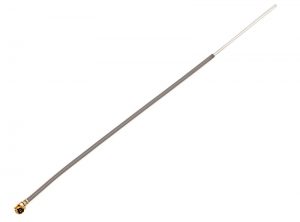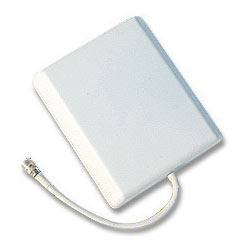 Digi International
Digi International
February 06, 2018
Antennas come in many shapes and sizes, for many different uses. Some are attached externally to the product for the correct functionality, while others must be designed into the end device so it is both invisible and functional. For example, if you have a device enclosed in a metal box, like a router, your antenna is going to be connected externally. For a mobile device or wearable, however, you probably want a smaller antenna that is built into the internal design. The types of antennas for these different applications vary not only due to size and placement, but also properties and functionality.
In this post, we've provided an overview of the most prevalent antenna types and their common IoT applications. Note that most categories of antennas have several sub-types. Additionally, the topic of antennas can quickly get into deep technical detail and mathematical formulas, which is beyond the scope of this post. If you need further assistance with your antenna selection, our
Wireless Design Services team can help.
Topics in this blog
- Dipole Antennas
- Monopole Antennas
- Loop Antennas
- Helical Antennas
- Patch Antennas
- Slot Antennas

1) Dipole Antennas
Dipole antennas are omni-directional, which means they radiate signals in all directions on at least one plane. They are typically large since they are half wavelength structures. This amounts to about 6 inches in length for cellular antennas. These antennas are nearly always used externally, such as for metal box devices like routers and gateways. They may ship with the device or may need to be ordered separately.
Properties of Dipole Antennas
Dipole antennas are very efficient antennas with a consistent performance, omni-directional radiation pattern, and reliable polarization. A dipole antenna has a radiation pattern that is not dependent on the size of the box or the ground plane. This is accomplished because the dipole has balanced currents on both antenna arms resulting in little current flow on the ground plane or chassis. The radiation pattern looks like a donut with most of the energy being emitted from the broadside of the antenna. The antenna isolates itself from the metal box (chassis), which acts as the ground plane.
Common Applications for Dipole Antennas
Use a dipole antenna when you need to talk in all directions (omni-directional) and dont know the location of the receiving link. Common applications for dipole antennas include cellular and Wi-Fi applications; there are different dipole models for each of these communication types. (Dipole has limited bandwidth, so different lengths are required for difference frequency bands.)
The dipole antenna will work well for an external antenna mounted on a metal enclosure, regardless of the enclosure size. Metal enclosures are very common with industrial applications in harsh environments and external antennas are a near certainty under these constraints. Also, due to their high efficiency and consistent radiation pattern, labs often use dipoles for reference antennas to calibrate antenna measurement systems.
(2) Monopole Antennas

Monopole antennas are small, omni-directional, quarter wavelength antennas. They are typically installed internally within a device, but can also be external.
Properties of Monopole Antennas
Monopole antennas are like dipole antennas, but with a single antenna arm that is a quarter wavelength. The monopole antenna utilizes a ground plane as the other half of the dipole, and can therefore be made smaller than the dipole and is easier to implement. It is important to note that with a monopole, the radiation pattern is dependent on the cable length and metal enclosure (external antenna) size or ground plane size.
There are deviations of the monopole; most notably the Inverted F Antenna (IFA) which is typically a trace that is etched onto a PCB. The IFA was created to reduce the size of the antenna and still maintain a 50 O impedance over a small bandwidth. A variant of the IFA (also derived from the patch antenna) is a PIFA, which is a Planar IFA. The PIFA is typically a 3D structure (not etched onto a PCB) and has wider conductive sections than the IFA. Since the PIFA uses wider conductors and takes up more volume than the IFA, it typically has higher efficiency and bandwidth.
Common Applications for Monopole Antennas
Use monopole whip antennas when you need an inexpensive, narrowband, external antenna and can't use a dipole antenna due to the antenna size. A more elegant solution is the PIFA, which can be made much shorter than the monopole and more mechanically robust, yet at the expense of a distorted omni-directional radiation pattern. Cellular phones are the most common application for PIFAs today. The PIFA is easy to manufacture and touts good efficiency and bandwidth in a small form factor. Wearables often use an IFA or PIFA as well. Embedded wireless devices often use IFAs etched onto the PCB due to their very low cost.
3) Loop Antennas
Small loop antennas are omni-directional, but as the loop gets bigger (diameter approaches one wavelength), it becomes bidirectional. Loop antennas will always be larger than monopole or dipoles antennas in order to achieve the same radiation efficiency, so they are not as common for wireless embedded devices.
Properties of Loop Antennas
Loop antennas have dominant magnetic near fields, which means they are less influenced by electric conductors, such as a metal plate or even salt water, which have more influence over electric fields than magnetic. This makes them particularly useful for wearables, since humans have very limited magnetic properties. Note that these properties relate to near field performance; in a far field all antennas do the same thing, but in a near field the device is more dependent on the type of antenna.
Common Applications for Loop Antennas
Wearables such as exercise trackers and implantable devices are common applications for loop antennas. For example, an antenna implanted near the heart would have a lot more performance degradation with an electric near field antenna, such as a monopole or dipole antenna, than a magnetic near field loop antenna.
4) Helical Antennas
Helical antennas are essentially very small monopole antennas that are wound in a helix form. Imagine taking a piece of conducting wire that goes straight up, and winding it around a bobbin to reduce its overall height. The overall length is very similar to a standard monopole antenna.
Properties of Helical Antennas
Helical antennas have an omnidirectional radiation pattern like a monopole antenna. Winding it in a helical fashion makes it possible to place these long antennas in small spaces. Because they are much smaller than a monopole, you're giving up a little efficiency and bandwidth in order to shrink the antenna considerably.
Common Applications for Helical Antennas
Helical antennas are highly compact, which makes them useful for portable communications equipment. They are commonly used for equipment that operates on lower frequency bands, including HF, VHF, and UHF bands. For example, a 433 MHz monopole antenna would be about 7 in length; because many devices are much smaller than this, a helical antenna is used to achieve good antenna efficiency and near 50 O impedance in a small form factor.
5) Patch Antennas
Patch antennas are directional, which means your application must have line-of-sight communications between devices for best performance: Device A will only talk to Device B and they are always oriented so the patch antenna on the devices faces one another. Since we know where the devices will always be, there is no need for omni-directional radiation.
Properties of Patch Antennas
Patch antennas are very low-profile, lightweight antennas that are easy to manufacture. The natural resonance of a patch is a half wavelength (like a dipole), yet the patch size is often shrunk considerably with the use of dielectrics. Due to the dielectric loaded small patch size and limited volume it entails, the patch is very narrowband. Patch antennas are also sometimes called "microstrip antennas" and can be etched directly on a PCB.
Common Applications for Patch Antennas
Patch antennas are very useful when you have a direct line-of-sight (los) path between the transmitter and receiver, and the required bandwidth is minimal (low data rates). GPS communications are one example, as they make use of satellites, and you know they are always located in the sky and use a very low data rate. The patch is ideal for vehicle tracking since it is low profile and inexpensive, and when you position it on the hood or top of a vehicle, all the energy is focused where you actually need it.
6) Slot Antennas
Slot antennas are typically comprised of a metal plate or PCB with slots cut out. The slots radiate in a similar fashion to dipole antennas and are half wavelength, yet have the opposite polarization of the dipole. They are very efficient antennas and have a bi-directional radiation pattern. It is easy to achieve a unidirectional radiation pattern by enclosing one end of the slot with a metal enclosure.
Properties of Slot Antennas
The slot has a simple design and extremely low profile that make it very versatile. Slot antennas were originally created for television broadcasting purposes. The antenna's radiation pattern is determined by the size of the slots, their shape, and the driving frequency.
Common Applications for Slot Antennas
Slot antennas are very useful for metal enclosures where you can't use an external antenna. Common applications include navigation systems on naval vessels and planes where external antennas are at environmental risk.
Conclusion
The antenna is very dependent on device size and tolerable antenna size; and this comes down to physics and practical limitations. To ensure good wireless performance, choose your antenna type and overall device size appropriately for the given application.
>>Did you know? Digi'S Wireless Design Services team can help with your antenna design. See the WDS Antenna Design page.